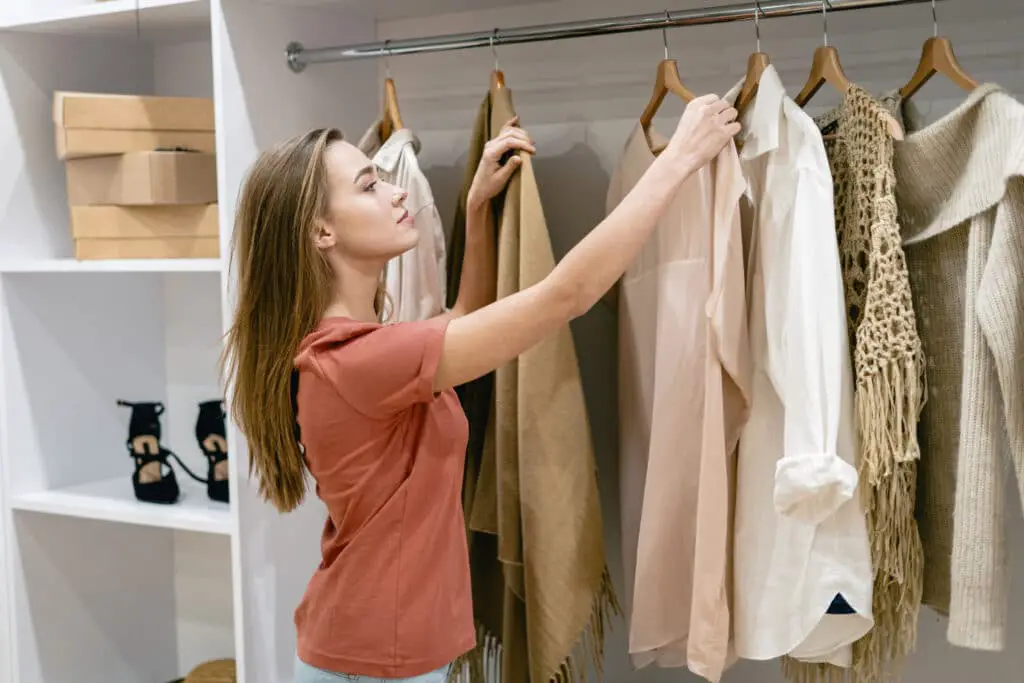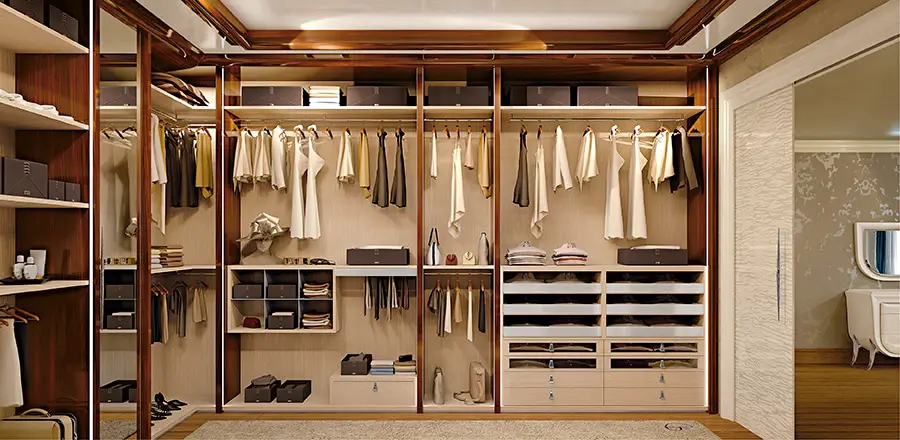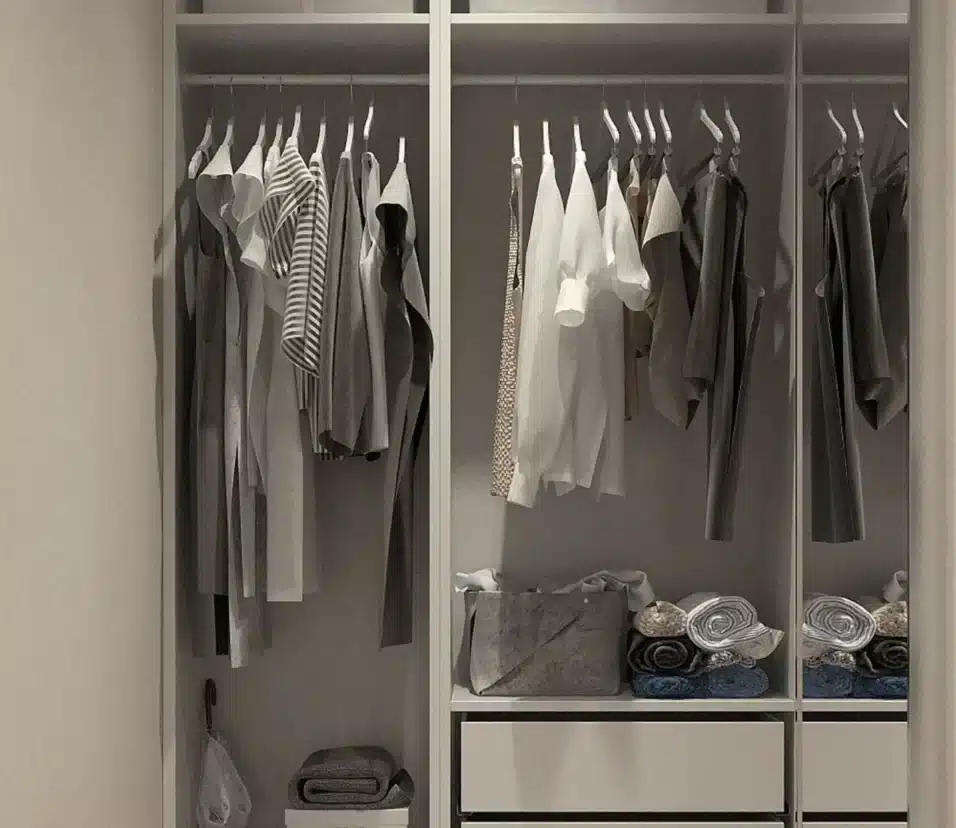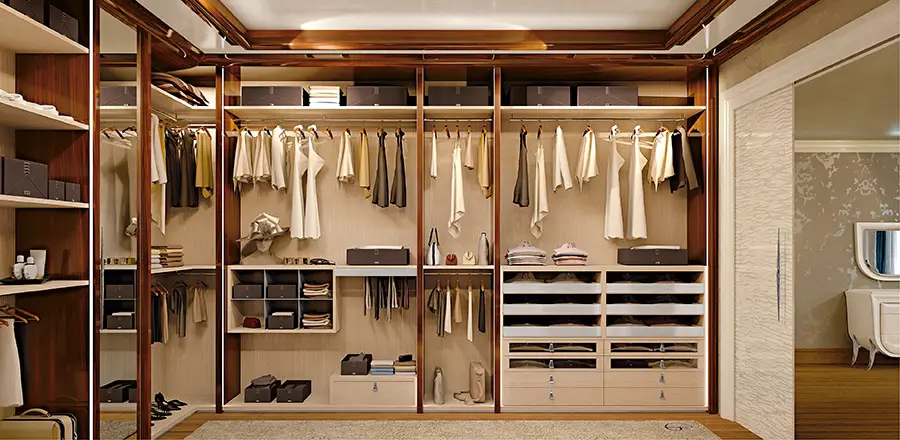How Many Clothes Should A Woman Have In Her Wardrobe
Introduction
How Many Clothes Should A Woman Have In Her Wardrobe: In a world of changing fashion trends and personal style preferences, how many garments a lady should have is intriguing and subjective. The ideal outfit reflects personal choices, lifestyles, and cultural influences of the curators. Recently, minimalist wardrobes have become popular, emphasizing quality over quantity.
Others appreciate the flexibility of expression that comes with a broader wardrobe that fits several styles for different occasions. Some use fashion to express themselves, and a wide wardrobe lets them experiment with different appearances and moods. Ultimately, the ideal size of a woman’s wardrobe is a matter of personal preference.
As fashion continues to evolve and adapt to individual needs, there is no universal formula for the “right” number of clothes smelling a woman should have in her wardrobe. What remains paramount is the cultivation of a wardrobe that resonates with one’s identity, promotes sustainability, and aligns with the practical demands of life. Whether it’s a capsule closet or a fashionably abundant array, the key is to curate a collection that empowers and delights, allowing each woman to express herself confidently through the art of clothing.

What items should every woman have in her wardrobe?
Below, shop a collection of closet must-haves from your friends at Vogue.
- The Go-To Denim. No wardrobe is complete without a pair of Levi’s.
- The Crisp White Poplin.
- The Little White Dress.
- The Billowing, Breezy Skirt.
- The Trouser-esque Leggings.
- The Editor Dress.
- The Ribbed Tank.
- The All-Purpose Knitwear.
Additionally, black pants, a statement handbag, classic pumps, comfortable flats, and a trench coat are crucial. Basic t-shirts in different colors, workout gear, and sleepwear are essential for comfort and practicality.
Accessorizing with timeless jewelry, a stylish belt, and sunglasses can elevate any ensemble. Swimsuits are essential for poolside days or vacations. Furthermore, including ethnic wear and cultural attire that resonate with individual heritage adds a personalized touch.
Adapting to personal style, lifestyle, and climate, these core pieces allow for a range of outfits. Quality over quantity is key; investing in well-made items ensures longevity. Customization is encouraged, enabling each woman to tailor her wardrobe to reflect her unique identity while embracing functionality, comfort, and confidence.
How many clothes should a woman have in her wardrobe?
The researchers found that a “sufficient” wardrobe consists of 74 garments and 20 outfits in total. However, a practical approach involves curating a collection that strikes a balance between versatility and personal expression. A capsule wardrobe, for instance, typically consists of around 30-40 well-chosen pieces that can be mixed and matched to create a range of outfits suitable for various occasions. This approach promotes a more minimalist and sustainable approach to fashion, encouraging thoughtful consumption and reducing clutter.
On the other hand, some women may prefer a more extensive wardrobe with a broader range of options to cater to their diverse styles and social commitments. It’s important to assess one’s lifestyle and daily activities to determine the number of clothes needed. Striving for quality over quantity and investing in timeless, durable pieces can lead to a more functional and enduring wardrobe. Ultimately, the goal is to create a collection that aligns with your personal style, makes getting dressed enjoyable, and meets the demands of your lifestyle while promoting responsible fashion choices.
How many clothes should a Indian woman have in her wardrobe?
7-9 Dressy Clothes. 5-7 Casual Clothes. 2-3 Relaxing Clothes. 3-4 Pairs of working Shoes.
The appropriate number of clothes for an Indian woman’s wardrobe depends on various factors including personal style, cultural norms, and lifestyle. In India, where attire can range from traditional to modern, the ideal wardrobe balance should reflect versatility and cultural sensitivity.
A well-rounded Indian woman’s wardrobe might encompass a selection of ethnic wear such as sarees, salwar kameez, and lehengas for special occasions and cultural events. Alongside these, practical and stylish everyday wear like kurtas, leggings, and fusion wear could be included. A mix of timeless classics and trendy pieces allows for flexibility in dressing.
Considering the diverse climate and festivities in India, having a variety of options is advantageous. However, the concept of a curated closet with quality over quantity still holds value. Ultimately, the number of clothes should be tailored to individual preferences, cultural requirements, and daily activities.
What is the 33 items in minimalist wardrobe?
The idea behind Project 333 is simple: Wear only 33 articles of clothing for the next 3 months. All clothing, accessories, jewelry, outerwear, and shoes count towards your number. Exceptions include wedding rings, underwear, sleepwear, in-home loungewear, and workout clothing.
A minimalist wardrobe, often associated with the “33-Item Wardrobe” concept, focuses on paring down one’s clothing collection to 33 versatile items, including clothing, shoes, and outerwear, for a specific period, usually three months. This approach emphasizes quality over quantity and encourages mindful consumption.
Adopting a minimalist wardrobe can help simplify daily decisions, reduce clutter, and encourage a more sustainable approach to fashion. However, the exact composition of the 33 items will vary based on individual needs, preferences, and lifestyle, making it important to tailor the selection to fit one’s unique circumstances while adhering to the principles of intentional, purposeful dressing.
How does the concept of a minimalist wardrobe impact the decision on how many clothes a woman should possess?
The concept of a minimalist wardrobe significantly influences the approach to determining the number of clothes a woman should possess. Rooted in the philosophy of intentional living and conscious consumption, a minimalist wardrobe encourages individuals to streamline their clothing collection to a carefully curated selection of versatile and high-quality pieces.
By embracing a minimalist approach, a woman considers each garment’s functionality, versatility, and ability to complement other items in her wardrobe. This prompts her to focus on timeless, classic pieces that can transition seamlessly across different occasions and styles. The emphasis shifts from quantity to quality, encouraging investments in well-made items that are likely to endure both in terms of style and durability.
Minimalism also advocates for reducing clutter and promoting sustainable practices. A smaller wardrobe means less wastage, reduced reliance on fast fashion, and a lower environmental impact. With fewer choices, decision fatigue diminishes, allowing for quicker and more mindful selections when getting dressed.
Ultimately, the minimalist wardrobe concept prompts women to assess their individual needs, style preferences, and daily activities critically. The approach encourages a more mindful, purposeful, and eco-friendly approach to fashion, leading to a more fulfilling and efficient wardrobe that resonates with personal values and enhances the overall quality of life.
What are the key considerations when determining the appropriate wardrobe size for an individual woman?
When determining the appropriate wardrobe size for an individual woman, several key considerations come into play to ensure a functional and personalized collection.
Lifestyle: Assessing her daily activities, such as work, social events, hobbies, and travel, helps determine the range of clothing needed for various occasions.
Climate: Factoring in the local climate is essential, as it dictates the types of clothing required for different seasons, ensuring comfort and practicality.
Personal Style: Understanding her style preferences, whether casual, formal, bohemian, or minimalist, guides the selection of garments that resonate with her identity.
Cultural Norms: Cultural practices and norms influence the types of clothing required for specific events or traditions, ensuring respect for cultural heritage.
Body Type: Recognizing her body shape and size helps choose pieces that flatter her figure and boost confidence.
Quality vs. Quantity: Deciding whether to prioritize a smaller collection of high-quality items or a broader range of options is crucial, aligning with her values and lifestyle.
Versatility: Opting for versatile pieces that can be mixed and matched to create numerous outfits enhances the functionality of the wardrobe.
Sustainability: Striving for sustainability by focusing on well-made, timeless pieces and avoiding excess aligns with eco-conscious values.
Budget: Consideration of budget constraints ensures responsible spending while still acquiring essential and quality clothing items.
Emotional Connection: Taking into account items that hold sentimental value or contribute to emotional well-being can provide a sense of comfort and connection.
By integrating these considerations, an individual woman can create a wardrobe that harmonizes with her practical needs, style preferences, and values, resulting in a collection that is both functional and personally fulfilling.
Can you discuss the balance between having enough clothes for various occasions and avoiding excessive clutter in a woman’s wardrobe?
The balance between having enough clothes for various occasions and avoiding excessive clutter in a woman’s wardrobe hinges on mindful curation and a strategic approach. While diversity is important to accommodate different events and moods, an overly cluttered wardrobe can lead to decision fatigue and hinder practicality. To strike this balance, women can prioritize versatility by choosing pieces that can transition between casual and formal settings.
Regular decluttering is vital to prevent accumulation. Periodic assessments help identify items that no longer fit, suit the current style, or have served their purpose. Donating or recycling these items fosters a sense of renewal while reducing clutter.
A capsule wardrobe approach can also aid in maintaining balance. Curating a limited set of items for a specific period encourages intentionality and creativity in styling.
How does cultural background and lifestyle affect the number of clothes a woman might need in her wardrobe?
Cultural background and lifestyle play pivotal roles in determining the number of clothes a woman needs in her wardrobe. Cultural norms and traditions influence the types of attire required for specific occasions. For instance, a woman from a culture with elaborate ceremonies may need more formal and traditional outfits, whereas someone from a more casual culture might require a versatile mix of everyday wear.
Lifestyle also has a significant impact. Climate also shapes wardrobe needs; living in a colder region demands warmer clothing, while a warmer climate necessitates lighter options.
Furthermore, social events and commitments dictate wardrobe diversity. Attending frequent formal events or social gatherings may require a larger collection of dressier outfits. On the other hand, a woman with a minimalist lifestyle might prefer a smaller wardrobe focused on versatile, high-quality pieces.

Conclusion
Many things influence a woman’s wardrobe, including style, lifestyle, and morals. Fashion is a dynamic and personal form of self-expression, thus there is no magic number.
The evolving fashion landscape offers a many clothes spectrum of choices, from the minimalist approach that encourages quality and versatility to the eclectic approach that celebrates diversity and creativity. Whichever path a woman chooses, it’s important to consider the environmental impact of consumption and to foster a sense of mindfulness in acquiring and maintaining clothing.
Ultimately, a well-curated wardrobe is one that reflects the essence of the individual, aligns with practical needs, and brings joy and confidence. It’s about finding that harmonious balance between having enough options to express oneself while avoiding unnecessary excess. A woman’s wardrobe should empower her, match her path, and allow her to walk out in elegance and authenticity, regardless of fashion fads. Whether it’s a strictly edited collection or a diversified ensemble, the essential beauty is how each lady embraces apparel as a reflection of her identity.
Meta
Discover the perfect balance How many clothes should a woman have in her wardrobe Practical insights here.





